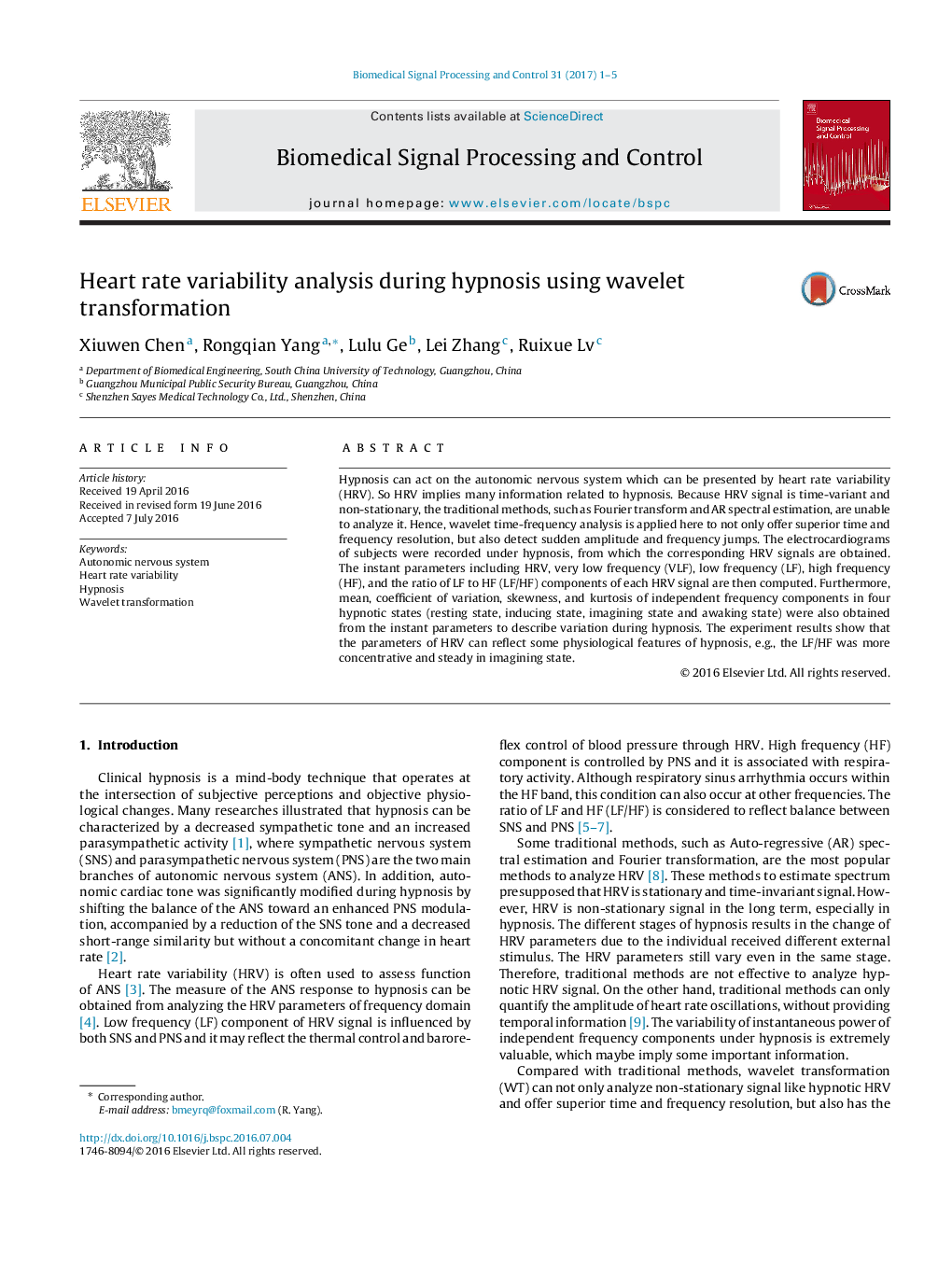| Article ID | Journal | Published Year | Pages | File Type |
|---|---|---|---|---|
| 6951034 | Biomedical Signal Processing and Control | 2017 | 5 Pages |
Abstract
Hypnosis can act on the autonomic nervous system which can be presented by heart rate variability (HRV). So HRV implies many information related to hypnosis. Because HRV signal is time-variant and non-stationary, the traditional methods, such as Fourier transform and AR spectral estimation, are unable to analyze it. Hence, wavelet time-frequency analysis is applied here to not only offer superior time and frequency resolution, but also detect sudden amplitude and frequency jumps. The electrocardiograms of subjects were recorded under hypnosis, from which the corresponding HRV signals are obtained. The instant parameters including HRV, very low frequency (VLF), low frequency (LF), high frequency (HF), and the ratio of LF to HF (LF/HF) components of each HRV signal are then computed. Furthermore, mean, coefficient of variation, skewness, and kurtosis of independent frequency components in four hypnotic states (resting state, inducing state, imagining state and awaking state) were also obtained from the instant parameters to describe variation during hypnosis. The experiment results show that the parameters of HRV can reflect some physiological features of hypnosis, e.g., the LF/HF was more concentrative and steady in imagining state.
Related Topics
Physical Sciences and Engineering
Computer Science
Signal Processing
Authors
Xiuwen Chen, Rongqian Yang, Lulu Ge, Lei Zhang, Ruixue Lv,
